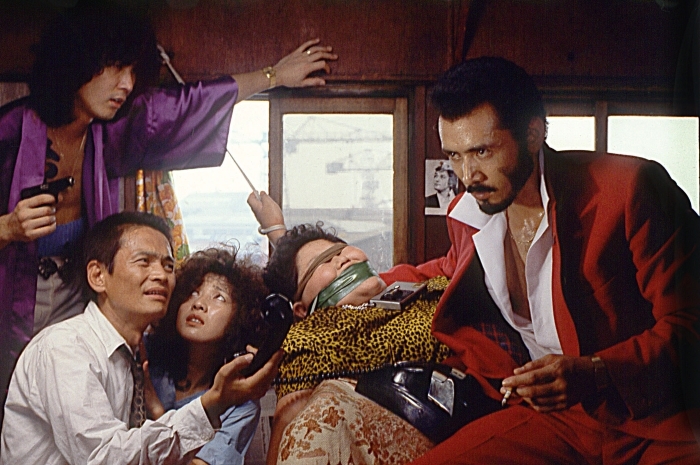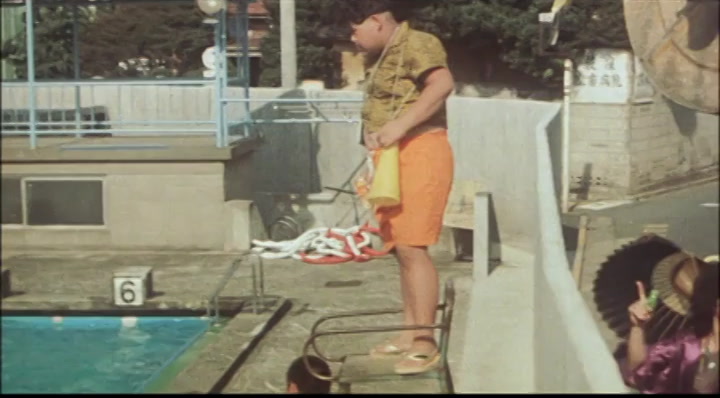
Cinema Guild has been working on the revival of two films by Shinji Somai for U.S. distribution: Typhoon Club (in a new 4K restoration) and P.P. Rider. The independent company worked with Japan Society on their retrospective of the Japanese filmmaker’s work in April and May and will open both films at IFC Center on September 8th, followed by a nationwide release.
P.P. Rider (ションベンライダー Shonben Rider) is a compelling farce that does not shy away from including moments of melancholy and violence. It is a multifaceted depiction of youth standing up against authority.
The narrative captures the shambolic enterprises of three high-school students who have to confront the yakuza and the lackadaisical police to save the class bully, who has been kidnapped.
In this work, Somai orchestrates an effective portrait of a moment in the early stage of an individual’s existence that Transcendentalist American author Thoreau defined as the time when “I wanted to live deep and suck out all the marrow of life.” Living life to its fullest is exactly what these teenagers do, as they recklessly embark upon an adventure to save their peer.

The casting is brilliant since every actor and actress fits like a glove to the assigned role, both in terms of physique and expressiveness. This quality pertains to the entire cast. There is the chubby Debunaga Nobunaga (Yoshikazu Suzuki), who goes by the nickname Deguchi, ‘Debu” (meaning “fat”); then there are JoJo (Masatoshi Nagase), Jisho (Shinobu Sakagami), and the androgynous girl who is called Bruce (Michiko Kawai).
Even the supporting roles are exceptional for the slapstick action they carry out throughout the film. These include Gombei (Tatsuya Fuji), Ikuko (Mitsuko Baishô), Teacher Arare (Hideko Hara), Police Officer Tanaka (Masatô Ibu), Masa (Ryô Kinomoto), Nobunaga’s Dad (Takehiko Maeda), Kinta (Hiroaki Murakami), the Moneylender (Casey Takamine), Kimura (Minori Terada), Shimada (Ichirô Zaitsu ).
The script — penned by Takuya Nishioka, Chieko Schrader, Leonard Schrader — is enticing for the way it unfolds the scenario of rocambolesque mishaps confronted by the juvenile rescue team. The youngsters fully embrace their freedom and Shinji Somai captures their zest for life with unparalleled shots. In fact, the most iconic scene of P.P. Rider is the opening shot, where a long-take whirls around from a couple of gangsters and goes all the way to the children playing in the school swimming pool.

The cinematography by Akihiro Ito and Masaki Tamura emphasises the tone of the storytelling, as the adolescents revel in subverting social codes.
The music by Katsu Hoshi punctuates the odyssey of the pubescent trio, as they get entangled in outrageous circumstances but ultimately manage to accomplish their mission.
In P.P. Rider Shinji Somai affirms his ability to be the cinematic poet of stories about adolescence. The Japanese filmmaker shows the world from the point of view of youngsters, without any adult preconceptions as his characters face danger with defiance and determination.
Modern audiences will have the chance to enjoy this 1983 forgotten gem by Shinji Somai and perceive how it is still topical and rich in implications.
Final Grade: B

